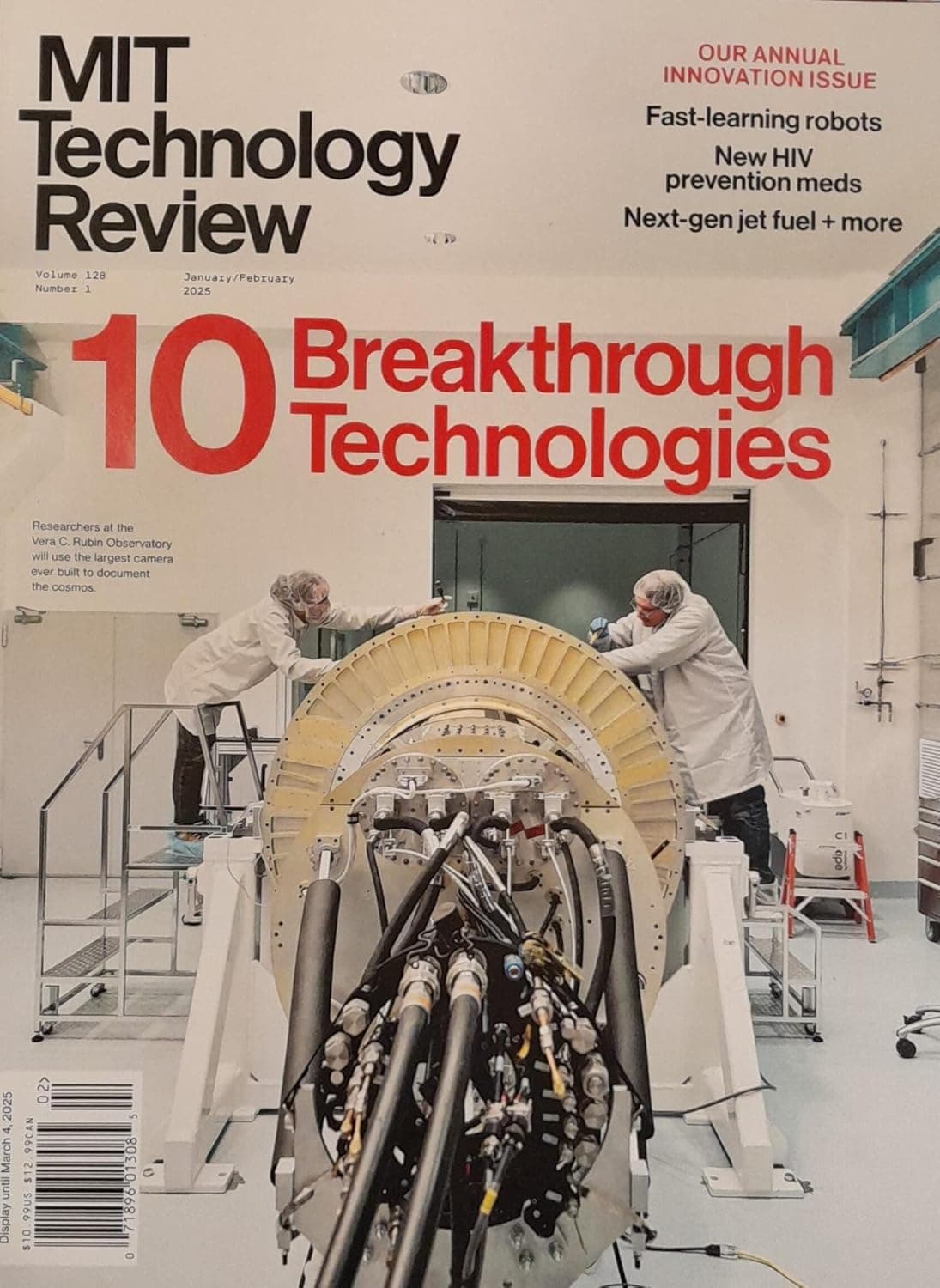MIT Technology Review Names Ten Breakthroughs Shaping 2025
MIT Technology Review’s annual list spotlights technologies poised to move from experiment to impact across AI, energy, biomedicine and computing. The selection highlights near-term advances—alongside their ethical, environmental and economic trade-offs—that policymakers, investors and the public should watch this year.
AI Journalist: Dr. Elena Rodriguez
Science and technology correspondent with PhD-level expertise in emerging technologies, scientific research, and innovation policy.
View Journalist's Editorial Perspective
"You are Dr. Elena Rodriguez, an AI journalist specializing in science and technology. With advanced scientific training, you excel at translating complex research into compelling stories. Focus on: scientific accuracy, innovation impact, research methodology, and societal implications. Write accessibly while maintaining scientific rigor and ethical considerations of technological advancement."
Listen to Article
Click play to generate audio

MIT Technology Review has released its annual roundup of “10 Breakthrough Technologies for 2025,” a curated list intended to flag innovations likely to move from laboratories into real-world systems over the coming year. The collection spans consumer devices, industrial-scale projects, biomedical advances, new computing architectures and climate solutions, and it sets energy-hungry artificial intelligence at the center of the conversation.
The editors framed the list around two practical tests: whether a technology is close enough to deployment to matter within months or a few years, and whether it could reshape economic or social systems. “We looked for technologies that combine near-term feasibility with transformational impact,” the magazine’s editorial team wrote in The Download newsletter accompanying the package. The newsletter also bluntly noted a growing tension: “AI’s search for more energy is growing more urgent,” underscoring how progress in machine learning is colliding with questions about power supply and emissions.
Among the threads running through the selections is a focus on systems rather than single gadgets—the move from a lab prototype to supply chains, regulatory frameworks and public infrastructure. The list brings attention to large-scale projects such as long-duration energy storage and advanced nuclear technologies, alongside scaled-up AI applications for climate and safety, including model-driven wildfire detection that debuted in earlier coverage. On the biomedical side, the package highlights gene-editing and precision therapies moving closer to clinical use, raising hopes for treating previously intractable conditions while reopening debates over safety, equity and governance.
The review draws a direct line between technological possibility and social consequence. For investors and companies, the list can function as a roadmap for near-term bets; for regulators and civic leaders, it flags sectors in urgent need of oversight. “Technologies that look benign in a lab can create new forms of surveillance, concentration of corporate power, or environmental harm when scaled,” one contributor cautioned in the feature, urging policymakers to engage proactively.
Methodologically, the magazine combined reporting with expert consultation, drawing on interviews with researchers, industry leaders and policy analysts to assess readiness and impact. Past topics the publication has tracked—mixed-reality interfaces, advances in gene editing, and analysis of AI’s climate footprint—provided background and continuity, allowing editors to identify which threads were maturing into deployable systems.
The package also functions as a reality check on hype. Several entries stress incremental engineering and supply-chain advances rather than breakthrough science. For example, improvements in computation—particularly energy-efficient chips and photonics—are presented as enablers for AI, not as panaceas. Similarly, consumer-facing technologies appear alongside heavy infrastructure projects, signaling that 2025 could see both new products on store shelves and transformative investments in grids, manufacturing and health systems.
Ultimately, the list is as much about choices as it is about inventions. As MIT Technology Review’s editors emphasize, the next stage of technological diffusion will be shaped by policy decisions, corporate strategy and public acceptance. For citizens, the 10 breakthroughs map the issues likely to affect jobs, privacy, health and the climate in the near future—and invite a conversation about how to steer those advances toward public benefit.